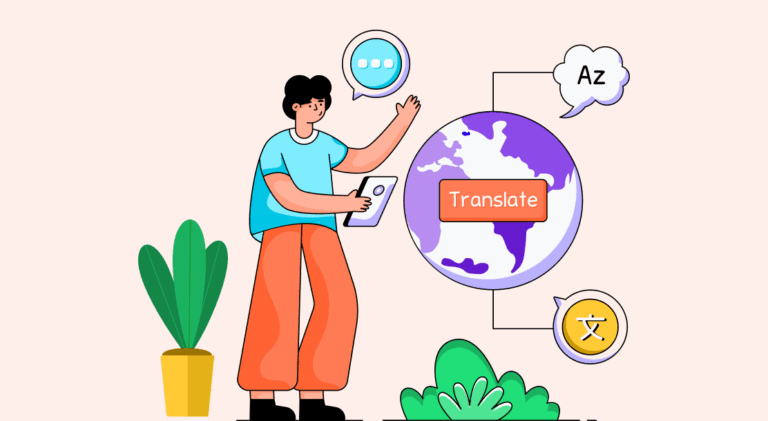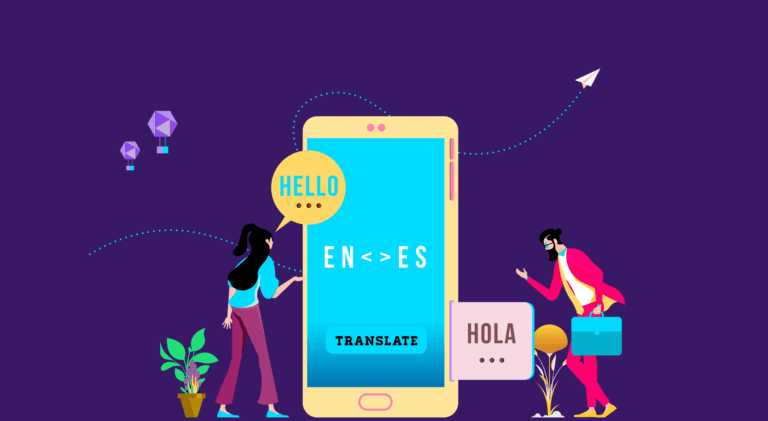
Table of Contents
- Why Are Translation Tools Important?
- 5 Best Translation Tools Online
- Conclusion
- FAQs
From self-driving cars and digital assistants to web content writing, artificial intelligence (AI) and machine learning have had an indelible impact on the world of science and technology. And the COVID-19 pandemic has only accelerated the infusion of AI in our official and household chores. Corporate operations often involve worldwide collaboration that gives a lot of importance to translation. With technology and AI on the rise, professional translators are rummaging through the internet for the best tools for translators.

Are you finding it increasingly tough to depend on Google Translate for formal communication? Or are you in two minds about language translation tools and their impact? If so, let us first get on the same page about their significance.
Why Are Translation Tools Important?
Here’s how literary tools help the translation process.
- They ensure the edited text’s compatibility, efficiency, and consistency by optimizing it.

- The best translation tools online employ state-of-the-art machine learning and AI to analyze the context and maintain consistency in phrasing and terminologies. Therefore, they maintain harmony with the source.
- When it comes to corporate or any other form of official translation service, high-quality language translation tools enhance the workflow by incorporating unique features, such as predictive typing and auto-propagation of repetitive text, resulting in foolproof, faster translations.
5 Best Translation Tools Online
The following are unarguably the best tools for translators. They will help you create top-notch work and assist in faster, optimized, high-quality translated material to aid communications satisfactorily.
1. Trados Studio
Trados Studio is one of the best language translation tools. It has been in operation for more than 30 years, and has been recommended as a wise investment by most wordsmiths out there. Why is it considered among the best tools for translators worldwide? It is a top-of-the-line computer-assisted translation (CAT) tool with a dedicated community of more than 250,000 translators. Trados has commanded its position as one of the top tools for translators, as it is highly versatile, and comes with features, such as translation memory and software localization, among others.

It is an industry-leading tool that assists freelance translators in translating text faster. It is a cutting-edge language service provider (LSP) that aids in desktop- and server-based localization solutions to manage a company’s localization procedure. It also fosters the growth of corporate departments by empowering localization teams to develop multilingual content efficiently.
2. Linguee
Linguee is the crème de la crème of language translation tools. Why is it highly appreciated by the translator community and often considered amongst the best tools for translators? It employs an extensive dictionary with search engine terms so that finding bilingual texts, words, and expressions—and coming up with their contextual translation—becomes as easy as pie.
Linguee is often used in tandem with Google images to assist language learners and translators alike. It is not a CAT tool per se. It essentially acts as a go-to glossary, where people can type words, texts, phrases, expressions in multiple languages and check their contextual translations and meanings. Linguee is one of the best translation tools online, as it combs the web for relevant documents where the translated word has been used correctly, and you would find it in action.
3. memoQ
Run by Microsoft, memoQ performs superlatively to transform the lives of freelance translators by enhancing their productivity and quality of work. It is a versatile CAT tool with multiple functions: translation memory to reuse previous work, machine translation, terminology management, product reporting, and quality control and assurance.
memoQ offers full-cycle translation management services for various industries, from software and game localization to multimedia and life science localization. This language translation tool caters to enterprises, individuals, and agencies alike.
4. Catapult Translation Tool
Often, freelance translators and enterprises consider the best language translation tools that would enable them to improve their translation speed manifold. In such a scenario, Catapult is one of the best tools for translators that helps them translate top-tier content at scale and enhance their productivity at the same time.
Catapult is one of the favored tools, as it is a highly secure web app and one of the high-end cloud-based language translation tools online. It offers a repertoire of cutting-edge solutions, such as machine translation, glossary, translation memory, team collaboration, etc., via an immensely user-friendly interface.
5. Wordfast Pro
Wordfast Pro is one of the best translation tools online. It equips freelance translators, language service providers, and enterprises with seamless translation handling. It enables all users to import and export translation packages with ease. It also has an easily navigable editor and time-saving features that allow for high-speed processing.
Another useful feature of this language translation tool is its ability to filter segments. It also has a quality checker that detects any anomalies in your grammar, spelling, punctuation, and more. You even get access to a comprehensive glossary and work with a range of file formats.
Conclusion
The list of the best tools for translators is endless, each offering its unique perks and benefits. But you have to decide on the ideal tool by establishing a benchmark that is in sync with your requirements. Multilingual language translation is a lucrative industry.
Translation tools are not only required for academic purposes, but are also used by freelance translators, LSPs, and multilingual corporate communications. With the freelance gig economy on the rise, the best tools for translators can come to your rescue and help you amass a decent income.
FAQs
When it comes to finding the best language translation tools, there is a trade-off. A lot of them perform literal translation without understanding the context or the objective of the work. However, according to usage and popularity, the best translation tools online are as follows.
– Bing Translator
– Word Lens Translator
– Linguee
– Babylon
– memoQ
Google Translate is a free, web-based CAT tool that enables you to translate your documents, organize your work, share translations, and even show previous versions of translations.
A translation environment tool (TEnT) is software that integrates a whole range of CAT tools into a relatively user-friendly workspace for enhanced UX.
In a particular survey report, it was found that nearly 58.66% of the survey respondents had used the Google Translate toolkit in the past. But given its limitations, it is not advised to use Google Translate for formal/official/corporate communication.
It is advisable not to use Google Translate when translating highly sensitive content pertaining to an individual or an organization. This also applies to content containing personal information, confidential data, and other company-sensitive information. Upon entering such information on Google Translate, they become the property of Google that can be utilized by the company, as per its discretion.
Besides that, Google Translate often creates inferior machine-quality translations, primarily because it has been fed with low-quality original text. The absence of glossaries often confuses the end-user about the standards of the target language.
Latest Blogs
Explore how Google’s 2025 AI search updates triggered ranking chaos. Learn actionable strategies to adapt your SEO for AI Overviews, zero-click searches, and SERP volatility. Stay ahead now.
Learn how to rank on AI search engines like ChatGPT, Perplexity, and Gemini by optimizing your content for authority, structure, and relevance. Stay ahead in AI-driven search with this strategic guide.
Explore the best healthcare SEO services for your medical practice. Improve online visibility and effectively reach more patients in need of your services.
Get your hands on the latest news!
Similar Posts

Translation
5 mins read
All You Need to Know About Language Translation and Terminology Management

Translation
5 mins read
6 Reasons to Translate Content into German

Translation
5 mins read
